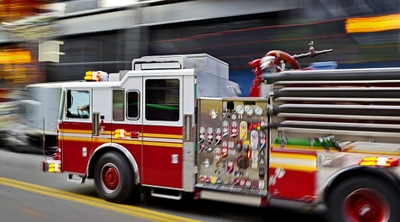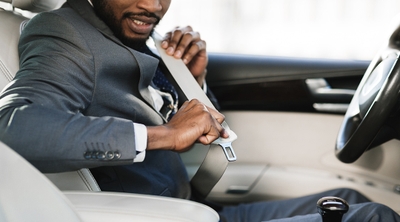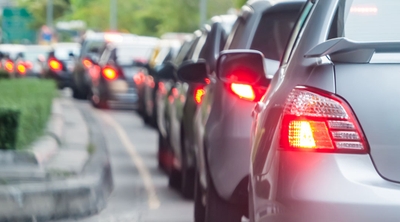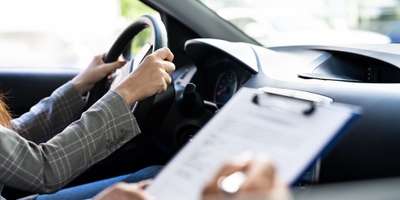What is driving etiquette?
4 min read
Driving etiquette refers to the nearly universal basic rules of the road. Examples include giving other drivers space, using your turn signal, and avoiding excessive honking. Following good traffic etiquette is essential to getting to your destination safely.
What are basic driving etiquette tips to follow?
Share the road
Give space to everyone on the road. Sharing the road allows drivers more room for error and can potentially prevent accidents. Avoid tailgating, which refers to following the car in front of you too closely. If another driver is tailgating you, make it easy for them to pass.
It's important to give extra space to certain vehicle types such as motorcycles and bicyclists, as their movements in traffic may be unpredictable. It's also good etiquette to give extra space to semis and tractor-trailer trucks because they require more room to slow down than an average car. When an emergency vehicle is approaching, proper driving etiquette is to slow down, pull over, and give them enough space to quickly pass.
Change lanes safely
Use your turn signal to alert drivers when you intend to change lanes. Check your mirrors and blind spots to avoid accidents or impeding the flow of traffic. Move into the lane smoothly, allowing room for other cars on the road. If you're passing a car, pass on the left, and only pass if you're going significantly faster than the car in front of you.
Merge appropriately
Use the zipper merge method when lanes come together. This method requires drivers from each lane to alternate merging. It's the most efficient and safest way to merge. Don't forget to wave at the driver who gives you space to merge.
When you're merging into the flow of traffic, make sure you're doing it at a high enough speed that a driver behind you doesn't have to slam on their brakes. And when you're in the traffic flow and see cars attempting to merge, consider briefly moving over a lane until the merging queue is behind you.
Use caution in parking lots
Drive slowly in parking lots and watch out for cars making sudden moves. When parking, it's courteous to use a spot that's suited for your car. For example, don't wedge an SUV into a space marked for compact cars.
Consider others at a gas station
Don't leave your car while gassing up. If it finishes filling before you return, you'll make others wait longer than necessary. It can also be dangerous to leave a car unattended.
Another rule of etiquette at the gas station is to leave the pump after you've filled up. Even if you're going into the station's store, moving your car allows others to get their turn at the pump as soon as possible.
Use your headlights effectively
Turn your lights on in less-than-ideal driving conditions. Your car is much easier to see in the rain with its lights on. However, you'll only want to use your fog lamps in actual foggy conditions. And it's good road etiquette to turn your high beams off if you're within a few hundred feet of another car in front for you, going in either direction. In fact, some states have a "failure to dim" law that requires it.
Flashing your headlights can also warn drivers going the opposite way about conditions ahead. Is there an unexpected slowdown around a curve that they might not see? Or is there a speed trap? Wild animals in the roadway? A couple of headlight pulses can tell a driver to prepare themselves for something unusual.
Minimize distractions
Distractions may cause accidents, injuries, or even fatalities on the road. Keeping your mind and attention on driving is not only polite, but also essential to the safety of everyone on the road. Avoid texting, eating, or drinking while driving. You can be ticketed for distracted driving, and it may increase your insurance rate.
Avoid angry reactions
Quickly escalating anger aimed at a driving error or rude maneuver can turn into "road rage." Angry reactions occur when a driver is cut off, makes a turn from the wrong lane, or gets stuck at a stoplight. Part of disciplined driving is being the bigger person and letting the anger pass without acting on it. If you make a mistake, apologizing can sometimes diffuse the situation.
Follow the speed limit
Don't drive too fast or too slowly. The speed limit signs indicate how fast you're supposed to drive under normal conditions. Driving too fast can be dangerous and illegal. If caught speeding, you're likely to have to pay a speeding ticket, and it may increase your insurance rate. But driving too slowly can also be dangerous, as it may frustrate drivers around you. That frustration can lead to mistakes or impulsive acts, which increases the potential for an accident. Learn how tickets impact insurance rates.
Use your horn in the right situations
Your car horn is designed to alert others of potential hazards or avoid accidents. It isn't intended to be used to relieve stress or express anger. Use your horn when it's appropriate, such as a driver drifting into your lane, a pedestrian walking into a busy street, or a driver not paying attention at a stoplight.
Other considerations for safe driving practices
As we gain more driving experience, many things become second nature. That can be a good thing. Our attention is better spent thinking about traffic and road conditions than how to physically operate the car. However, it can also lead to bad driving habits and inattention. Try to remember what it was like when you were a beginner and the common rules of the road. You may have taken fewer risks and paid more attention to the act of driving because it was new.






